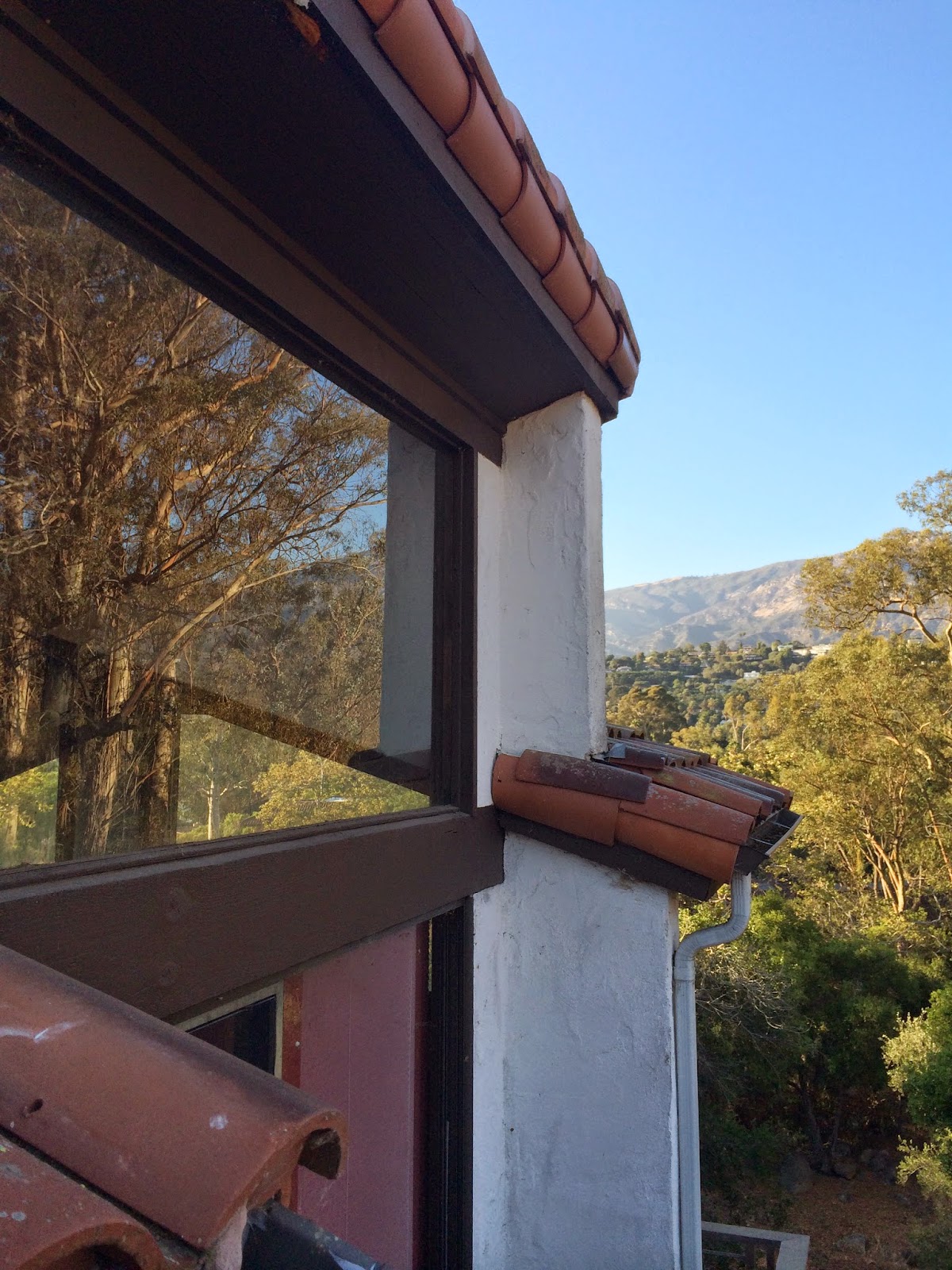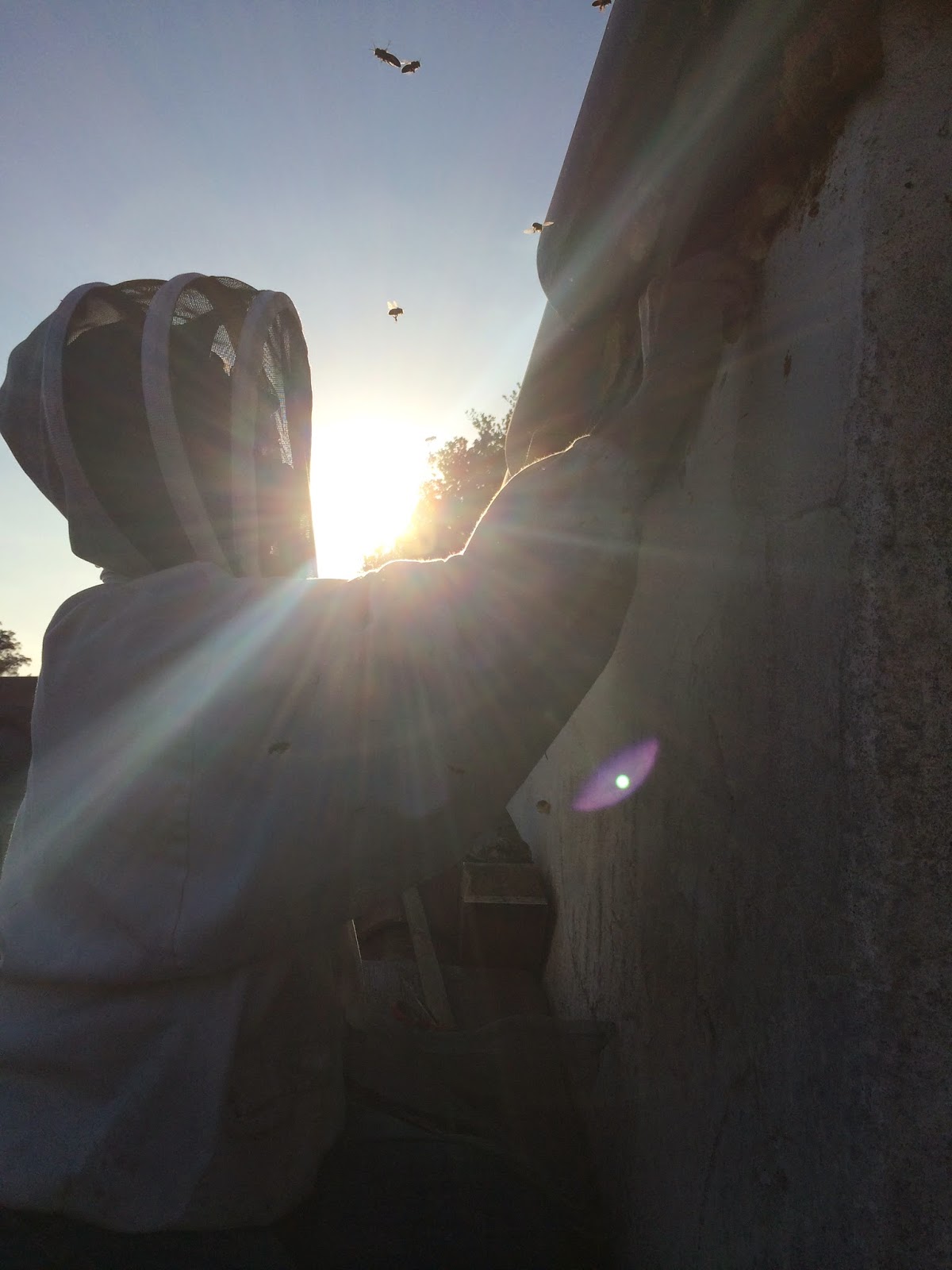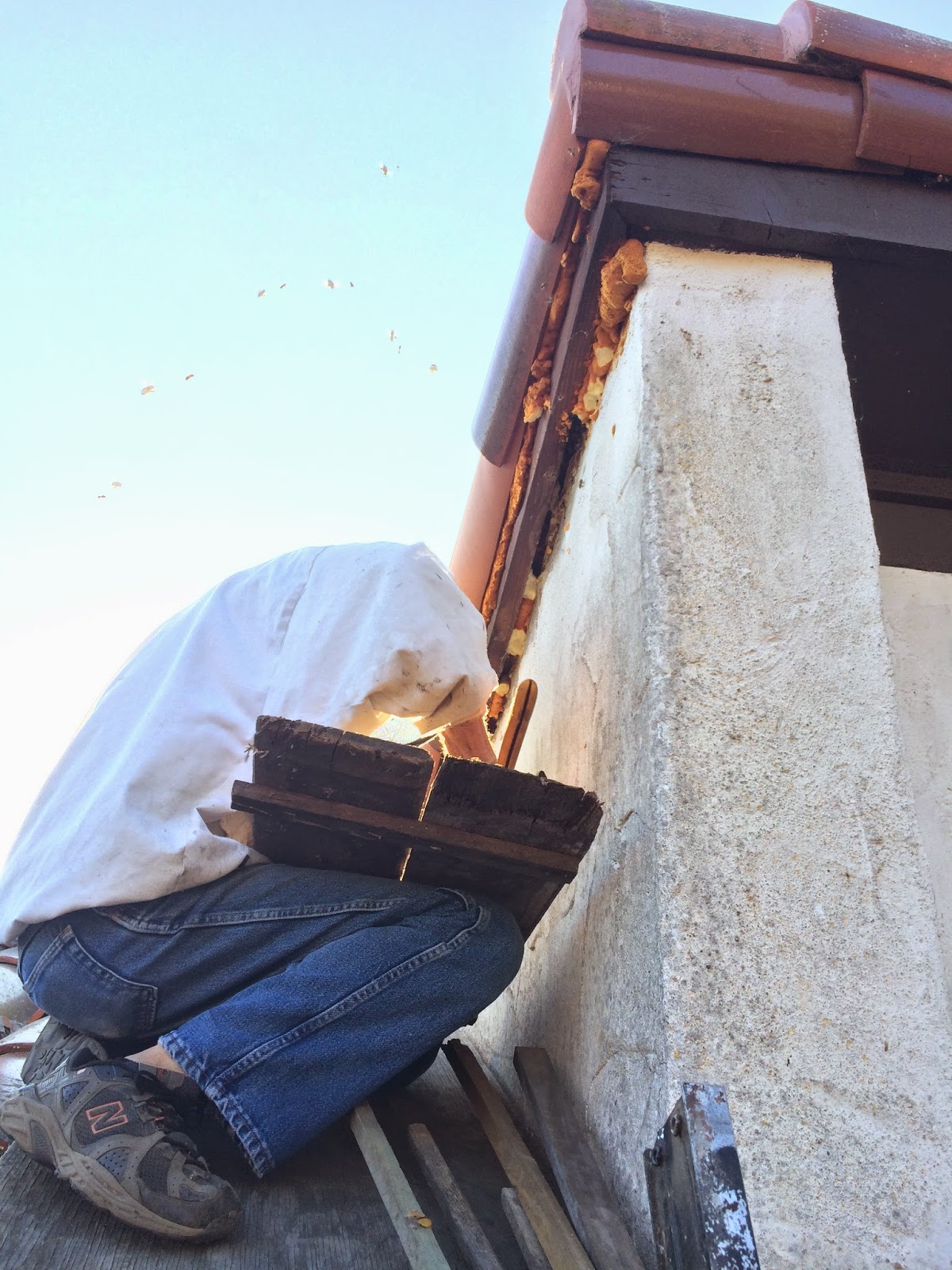The next week I was privileged to meet again with Paul and assist him on a ‘bait out’ project, also pretty close to my place near the Mission.
This one was right in the eaves of a really nice house that wasn’t currently being lived in. The bees had happily made a home on the top of the roof.
Paul was already busy and up the ladder when I arrived! I handed saws, nails, bits of wood, a backup smoker and other bee apparatus up the ladder as Paul fashioned a stand for the ‘dummy hive’, as well as a new entrance out of mesh to direct the bees out of their present home.
The mesh guide was really to make what was a large entrance, a small focused one. Apparently it can be extremely difficult to get bees out of roofs without tearing the whole roof apart, and homeowners rarely want to tear their roof apart (for some reason.. gee don’t they know how much honeycomb there could be?!).
Bait out is a process
Needless to say, I learned the bait out approach requires the most time, patience and finesse of all the bee catching processes.
The aim is to get the bees eventually to be trapped in the new hive with the assistance of the new mesh entrance, and make it impossible for them to go back into their old home.
After a few weeks, once the old colony is almost completely empty, a new queen is brought into the new bait hive, and the bees from the old colony accept her as their new leader!
I feel a little bad for the old Queen, although I read somewhere sometimes she will come into the bait hive too before the new Queen arrives (don’t quite understand this.. would she abandon here own brood?).
Beekeeping up appearances
I was a little caught by surprise when the homeowner showed up and Paul introduced me and said “This is Kelton, he’s been a beekeeper for what, 2 months now right?” Wondering if I was meant to assure the homeowner I was the utmost professional and experienced beekeeper.. I went along with it. Yep, it hadn’t even been 2 weeks!


